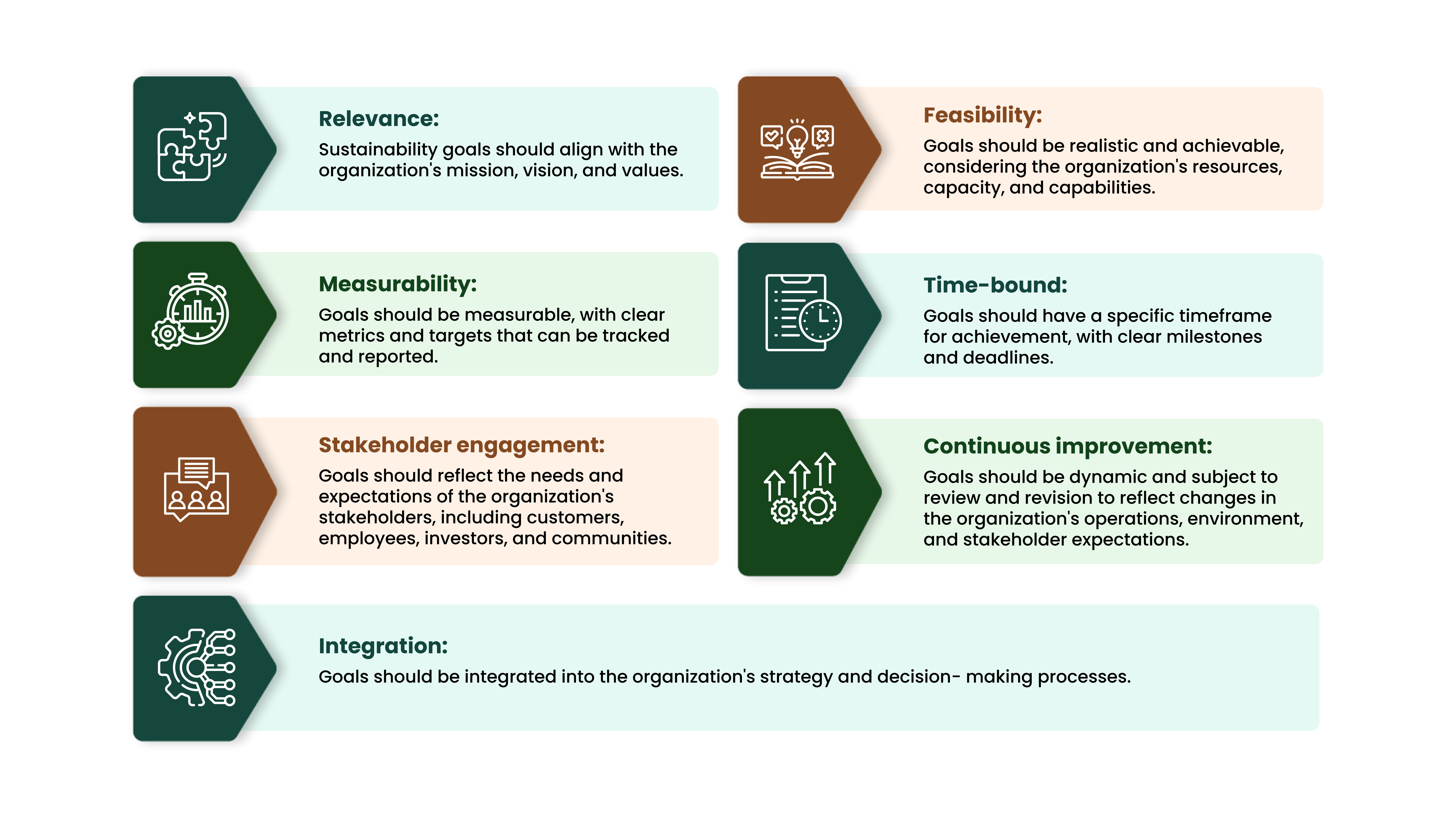
As our world faces mounting concerns about climate change, social inequality, and environmental degradation, businesses recognize the urgent need to prioritize sustainable practices. This is where sustainability goals come in. These goals are crucial for organizations to minimize their negative impacts on the planet while aligning with broader global goals, such as the United Nations Sustainable Development Goals (SDGs). By setting specific targets around reducing greenhouse gas emissions, conserving natural resources, and promoting social responsibility, businesses can mitigate their negative impacts, drive innovation, enhance their reputation, and attract stakeholders who prioritize sustainability.
In this blog, we'll explore the importance of sustainability goals and how it be achieved using prescriptive analytics. Let's dive deeper into this critical topic together.
The bottom-line benefits of sustainability goals: How prioritizing sustainability can improve your business performance
The global sustainability challenge demands that businesses prioritize sustainable practices in their operations. According to a report from The Guardian, “During a span of 18 years, companies with high sustainability significantly outperformed those with low sustainability in both stock market and accounting measures. The high-sustainability sample demonstrated an annual above-market average return of 4.8% higher than their low-sustainability counterparts and exhibited lower volatility.
Sustainability goals can also help organizations maintain their social license to operate, comply with regulations, and mitigate risks associated with climate change and other global challenges. As consumers become increasingly conscious of their purchasing decisions' impact on the environment, businesses prioritizing sustainability are well-positioned to attract and retain customers. A recent survey found that 70% of consumers are willing to pay more for sustainable products. By setting and achieving sustainability goals, businesses can create a competitive advantage and improve their brand reputation.
Sustainability goal-setting: The seven essential factors to consider for maximum impact
As organizations increasingly prioritize sustainability, there are seven essential factors to consider:

Now, once you have taken into account these factors, you need to find the optimum way to do it.
Since sustainability goals are often complex and multi-dimensional, involving energy consumption, waste reduction, and greenhouse gas emissions, you must navigate this complexity and identify the most effective strategies for achieving your sustainability targets.
Enter prescriptive analytics.
With prescriptive analytics, businesses can identify the best strategies for achieving their sustainability goals and track their progress. This approach helps achieve sustainability targets faster and more efficiently while minimizing costs and risks.
But what is prescriptive analytics? Is it different from other forms of analytics?
Let’s see.
What is prescriptive analytics?
Prescriptive analytics helps companies make decisions by providing recommendations based on data, statistical algorithms, and machine learning techniques. It uses historical data and predictive analytics to determine the best action in real-time situations. Unlike descriptive and predictive analytics, which focus on understanding and predicting what has happened or might happen, prescriptive analytics offers recommendations on what should be done to optimize outcomes. These recommendations can be used to make decisions that maximize business outcomes, reduce costs, and improve performance. In addition, it has numerous applications in various industries, including healthcare, finance, logistics, and supply chain management.
Using prescriptive analytics to establish meaningful sustainability goals
As a business looking to establish sustainability goals, prescriptive analytics can be a powerful tool to achieve meaningful change. By using advanced algorithms to analyze data, it provides valuable insights that help identify the most effective ways to reduce your carbon footprint, minimize waste, and optimize your supply chain. You can make informed decisions that drive sustainability efforts and maximize business outcomes. In addition to identifying areas for improvement, it also helps anticipate potential challenges and adjust strategies to meet changing environmental conditions. In addition, you can set and achieve sustainability goals that align with your business vision and values while minimizing costs and maximizing impact.
Steps to establishing sustainability goals with prescriptive analytics
- Define your sustainability goals: Identify specific and relevant goals that align with your organization's values and mission.
- Collect and analyze data: Gather data on your operations, suppliers, and stakeholders, and analyze it with prescriptive analytics to identify areas for improvement.
- Determine the best approach: Based on the insights generated, determine the best course of action to achieve your sustainability goals.
- Develop an action plan: Create a comprehensive plan outlining the steps, timelines, responsibilities, and performance metrics to achieve your sustainability goals.
- Implement the action plan: Allocate the necessary resources, monitor progress, and adjust strategies to effectively implement your action plan.
- Monitor and report on progress: Continuously monitor your progress towards your sustainability goals using prescriptive analytics, and adjust your action plan as needed.
- Communicate progress: Build trust and demonstrate transparency with stakeholders by communicating your progress towards achieving sustainability goals.
By following these steps and using prescriptive analytics, you can establish sustainability goals that drive meaningful and measurable change while maximizing business outcomes.
Real-world use cases of companies using prescriptive analytics to establish sustainability goals
Several companies have successfully used prescriptive analytics to establish and achieve meaningful sustainability goals. For instance:
- Walmart used data analytics to optimize its supply chain, reducing 27 million metric tons of greenhouse gas emissions.
- A consumer goods company, Unilever leveraged prescriptive analytics to reduce the waste generated by its production processes, resulting in cost savings of over $350 million.
- IBM used data analytics to optimize its data centers, reducing energy consumption by 13% and saving $40 million in energy costs.
By leveraging prescriptive analytics to establish sustainability goals, these companies were able to reduce their environmental impact, enhance their reputation, and improve their financial performance while contributing to a more sustainable future.
Closing words
Prescriptive analytics can be a powerful tool for organizations seeking to establish and achieve meaningful sustainability goals. Leveraging data and advanced algorithms can help identify the most effective ways to minimize environmental impacts, improve social responsibility, and enhance economic performance. This can lead to various benefits, including cost savings, improved efficiency, enhanced reputation, and greater stakeholder engagement. In addition, organizations can make data-driven decisions, develop effective action plans, monitor progress, and communicate results to stakeholders by following a structured process to establish sustainability goals with prescriptive analytics.

AUTHOR - FOLLOW
Editorial Team
Tredence
Topic Tags


